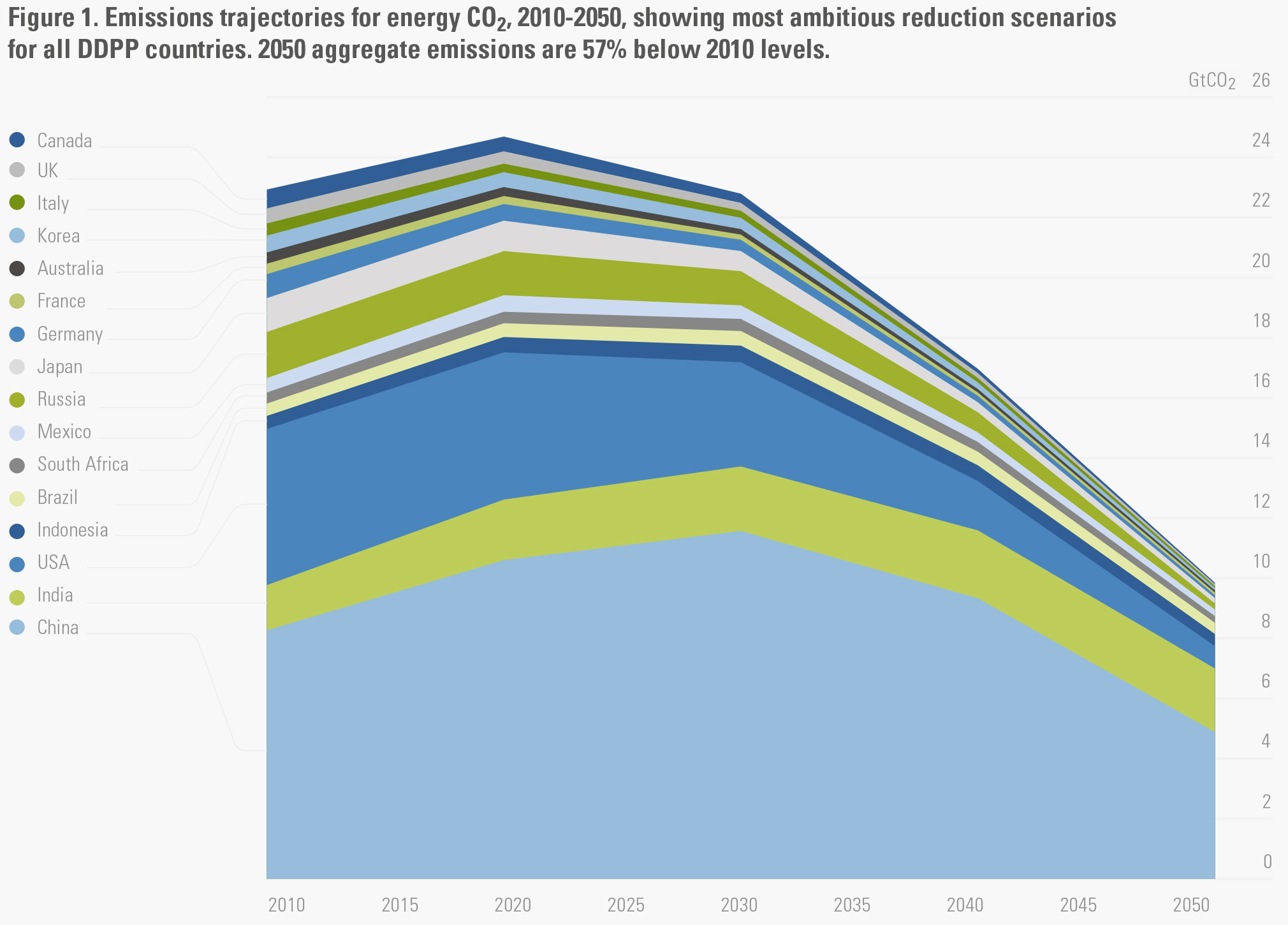A new international report has found that limiting global warming to 2°C by 2050 is still technically achievable, and could occur alongside economic and population growth.
The Deep Decarbonization Pathways Project 2015 Synthesis Report reveals the deeper emissions reductions potential of the world’s 16 major carbon emitters: Australia, Brazil, Canada, China, France, Germany, India, Indonesia, Italy, Japan, Mexico, Russia, South Africa, South Korea, the UK and the USA.
According to the report, emissions from the energy sector of all 16 countries could be reduced by up to 57% below 2010 levels by 2050, as global population grows by 17% and GDP increases by 250%.

The deep decarbonization pathways developed by the research teams all incorporate “three pillars” of energy system transformation: energy efficiency and conservation, decarbonizing electricity and fuels, and switching end uses to low-carbon supplies.
Excitingly, ClimateWorks Head of Research, Amandine Denis said the report showed significant investment opportunities in low carbon technologies, representing about 1-2 per cent of GDP by 2050 for the countries studied, or about 6-7% of total annual investment activity in those economies.
You can read the full report here or find out more from ClimateWorks.
Image credit: World Bank Photo Collection via Flickr licensed under CC BY-NC-ND 2.0